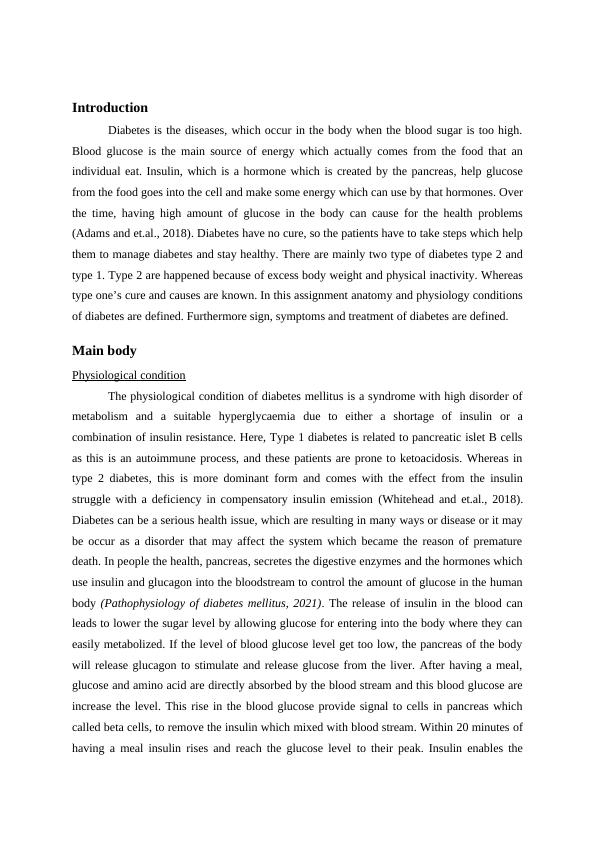Anatomy and Physiology of Diabetes: Symptoms, Treatment, and Impact
8 Pages2524 Words34 Views
Added on 2022-12-27
About This Document
This article provides an in-depth understanding of the anatomy and physiology of diabetes. It explains the physiological condition of diabetes, outlines the related anatomy and physiology, highlights the signs and symptoms, and describes the care, treatment, and monitoring for diabetic patients. The impact of diabetes on various body systems is also discussed. The article emphasizes the importance of maintaining blood glucose levels and following a proper diabetic diet.
Anatomy and Physiology of Diabetes: Symptoms, Treatment, and Impact
Added on 2022-12-27
ShareRelated Documents
End of preview
Want to access all the pages? Upload your documents or become a member.
Diabetes: Anatomy, Physiology, Causes, Symptoms and Management
|9
|1720
|317
Impact of Diabetes Mellitus on Society and Individuals
|10
|2942
|215
Collaborative Practice Simulation Workbook - Nursing Assessment
|14
|3452
|94
NUTRITION INTERVENTION & PLANING R.P: MS. SYEDDA FATIMA ABID
|32
|420
|73
Homeostatic Changes and Treatment of Diabetes Mellitus
|7
|2534
|492
Understanding Type II Diabetes: Symptoms, Treatment and Prevention
|9
|2805
|325



